Video streaming apps have transformed the way people choose entertainment, offering on-demand access to movies, shows, and live events. However, behind the seamless viewing experience lies a complex ecosystem filled with hurdles that developers and businesses must overcome.
From handling massive data loads to ensuring uninterrupted playback, the challenges of video streaming app development are evolving with user expectations and technological advancements. For those looking to build a competitive platform, understanding these obstacles is crucial.
In this ultimate guide to development challenges of a video streaming app, we will explore the most pressing issues, such as content security and user retention.
Additionally, we'll dive into the list of video streaming app challenges that can impact performance, scalability, and monetization strategies. Let’s explore it in detail.
What is a Video Streaming app?
A video streaming app is a digital platform that allows users to watch video content in real time over the internet without requiring downloads. These apps offer on-demand access to movies, TV shows, live broadcasts, and user-generated videos.
Some of the best video streaming apps, like Netflix, YouTube, and Disney+, utilize advanced technologies such as AI-driven recommendations, cloud storage, and adaptive bitrate streaming to enhance the viewing experience.
With the rise of high-speed internet and 5G, video streaming apps have become the primary mode of entertainment, replacing traditional TV services.
Whether subscription-based, ad-supported, or hybrid models, these platforms continuously evolve to meet user expectations. As video streaming continues to dominate digital entertainment, let’s explore key market statistics that highlight its rapid growth and future potential.
Market Statistics of Video Streaming Apps
The video streaming industry has witnessed substantial growth in recent years, driven by technological advancements and shifting consumer preferences. Let's take a closer look at the key market statistics shaping the future of video streaming apps.
-
According to Grand View Research, the global video streaming market was valued at $106.83 billion in 2023 and is projected to grow at a CAGR of 21.5% from 2024 to 2030, reaching approximately $416.84 billion by 2030.
-
The growth is largely driven by AI-powered recommendations, 5G adoption, and cloud streaming technology, all contributing to enhanced user experiences.
-
Consumers are increasingly cutting the cord and opting for on-demand streaming services over cable/satellite TV. This shift is driven by flexibility, convenience, and ad-free options.
-
As per the report, the Live Streaming Market is expected to grow from $90.01 billion in 2024 to $559.63 billion by 2032, exhibiting a compound annual growth rate (CAGR) of 25.60% during the forecast period (2024 - 2032).
-
Hybrid monetization models like Subscription-based services (SVOD), ad-supported video (AVOD), and transactional models (TVOD) are increasing to suit diverse consumer preferences.
These statistics highlight the ever-evolving nature of the streaming landscape. Businesses aiming to enter this market must stay aligned with these trends in video streaming apps to ensure long-term success.
However, like any digital solution, video streaming app development challenges are not just a joke. These challenges can significantly impact performance, user satisfaction, and long-term success if not addressed properly.
But despite having those hurdles why investing in a video streaming app is still a smart and strategic move. Let’s explore that before directly jumping into the challenges part.
Why Should You Invest in a Video Streaming App Development?
With a tremendous shift in the way people consume content these days, video streaming apps are the future of online entertainment.
If you’re planning to step into the video streaming world, here's why investing in video streaming app development is a forward-thinking decision:
A] Changing Consumer Behavior
Today's consumers prefer on-demand content over plain old cable TV. The convenience, ease, and personalized experience of streaming apps make them the go-to entertainment hub.
B] Global Audience with Reduced Operational Cost
In contrast to traditional broadcast networks, video streaming apps allow you to reach a global audience without hardware infrastructure, which is cost-effective and scalable.
The convergence of AI, 5G, and cloud technology enables smooth streaming, hyper-personalized recommendations, and faster loading—enhancing overall user experience.
C] High User Engagement & Retention
Interactive content, live chats, and customized playlists account for user engagement and greater retention.
D] Sophisticated Tech for Improved Experience
The incorporation of AI, 5G, and cloud technology supports seamless streaming, hyper-personalized suggestions, and quicker loading, improving overall user experience.
E] Versatility Across Niches
From entertainment to learning, fitness to live events, video streaming apps can be tailored to any niche or group.
All of those are reasons why today is the perfect day to invest in this booming market.
But while the potential is staggering, the road to building a successful streaming app is paved with its complications.
Let's now discuss the challenges of video streaming apps you need to prepare for.
Major Challenges of Video Streaming Apps
Developing a video streaming platform might seem thrilling, but the process is not as smooth as you think. From technical intricacies to user expectations, developers encounter many hurdles in between.
No matter if you're going to create a video streaming app for entertainment or education purposes, here's the ultimate guide to the challenges of developing a video streaming app, along with how to resolve them.
1. Ensuring Smooth Streaming Performance
One of the main development challenges in video streaming apps is providing high-quality video playback with no lag or buffering.
Consumers anticipate real-time streaming even under fluctuating internet speeds, and if they notice delays, they can easily switch to an alternative.
Streaming performance has to do with content delivery networks (CDNs), server load management, and adaptive bitrate streaming.
This gets really technical and sophisticated for startups or companies that do not have much infrastructure.
How to Overcome it:
-
Utilize dependable CDNs in order to deliver content quickly and seamlessly from global regions.
-
Employ adaptive bitrate streaming so that video quality may be changed according to internet speed.
-
Perform load testing on a regular basis to ready your servers for sudden spikes in traffic.
2. Increased App Development and Maintenance Expenses
It is very important to comprehend the cost to build a video streaming app. From infrastructure to tech stack, the costs start mounting rapidly, which makes it another challenge for video streaming apps worldwide.
Apart from the development, maintenance services of the app also involve constant investment so that the platforms remain stable as well as secure.
How to Overcome it:
-
Start with an MVP (Minimum Viable Product) to test features before scaling.
-
Opt for cloud services and scalable architecture to control infrastructure costs.
-
A dedicated budget for long-term updates and app maintenance service is another solution.
3. UI/UX Design Complexity
A great streaming experience goes beyond content, it’s also about how users navigate the app. One of the common development challenges for a video streaming app is building a clean, user-friendly, and engaging interface.
From personalized content feeds to easy browsing, the UI/UX design must be intuitive. A poorly designed layout can confuse users and hurt retention rates.
That’s why creating a clear app prototype and app wireframe during the initial stages of development is essential. It helps visualize the user journey and ensures the design flows smoothly before moving into full development.
How to Overcome it:
-
Focus on clean, minimalistic design with simple navigation.
-
Conduct A/B testing to see which interface elements users respond to best.
-
Regularly update the design based on feedback and behavior analytics.
4. Monetization Strategy & User Retention
Knowing how to monetize a video streaming app effectively is another challenge. With rising competition, users expect value in return for subscriptions or watching ads. Choosing the wrong strategy could impact revenue and customer loyalty.
There are various monetization models like SVOD, AVOD, TVOD, freemium. But selecting the best one for your target audience is tricky. User drop-off also becomes a major challenge of video streaming apps if your app doesn’t continuously offer engaging content.
How to Overcome it:
-
Offer tiered plans or a freemium model to attract diverse user segments.
-
Add features like watchlists, live events, and user recommendations to keep users engaged.
-
Monitor analytics to track churn rates and optimize the mobile app monetization model accordingly.
5. Integrating Advanced Technology
Integrating AI or machine learning features like personalized recommendations or content categorization adds more complexity to development. For businesses looking to create an AI app within a video streaming ecosystem, this becomes one of the challenges while building a video streaming app.
Partnering with the right AI app development company is also important as poor implementation can result in irrelevant suggestions, ruining the user experience.
How to Overcome it:
-
Use pre-trained AI models or APIs for content recommendation to speed up integration.
-
Continuously refine AI algorithms using real-time user data.
-
Work with an experienced AI development partner for better results.
6. App Testing and Quality Assurance
Improper testing can be one of the challenges of video streaming apps as it is a lot more than just finding bugs. You must test video quality under multiple network conditions, across various devices and screen sizes. Skipping this can result in a buggy experience that frustrates users.
App testing is time-consuming and often overlooked when businesses rush to launch quickly. But remember it’s better to delay launch than disappoint your users.
How to Overcome it:
-
Conduct both manual and automated testing for performance, load, and compatibility.
-
Simulate real-world scenarios to identify streaming issues.
-
Create a feedback loop post-launch to fix bugs quickly.
7. Managing Large-Scale Content Storage and Delivery
One of the top development challenges of a video streaming app is dealing with huge amounts of video content in an efficient manner.
As your collection increases, so does the demand for robust storage systems, high-speed data delivery, and secure content management.
Videos particularly HD or 4K take lots of storage space and bandwidth. If not a strong infrastructure, users might see delays, drops in quality, or outright streaming failure.
For apps that stream live events or long pieces of content, this issue becomes all the more pressing.
How to Overcome it:
-
Employ cloud storage solutions such as AWS, Google Cloud, or Azure for scalability.
-
Utilize file compression and video encoding methods to maximize storage.
-
Incorporate content delivery networks (CDNs) so that your video plays quickly and smoothly anywhere in the world.
8. Securing Content and Copyright
Privacy of content is a major development challenge of video streaming apps. Securing your content from unlawful downloads, screen recording, or sharing is perhaps the largest development challenge nowadays.
Without proper security measures like robust digital rights management (DRM) and encryption schemes, your premium content is vulnerable to piracy, illegal sharing, and unauthorized downloads.
This not only affects your revenue but also damages your brand’s reputation. Protecting content is essential to ensure fair compensation for creators, studios, and platform owners.
How to Overcome it:
-
Implement robust DRM systems such as Google Widevine or Apple FairPlay.
-
Employ token-based access and encrypted streaming protocols (such as HLS encryption).
-
Track and alert suspicious user behavior using AI-based threat detection systems.
9. Cross-platform compatibility and Device Fragmentation
Another challenge of video streaming apps is making the platform compatible with different devices, operating systems, and display sizes.
Your users can be watching content on smartphones, tablets, smart TVs, or desktops and each of these has their own tech stack and display settings.
Without optimization, issues like layout distortion, playback failure, or lost features may arise. This disparity can lead to a poor experience and loss of user confidence in the platform.
How to Overcome it:
-
Use cross-platform development frameworks to allow consistency and reduce development time.
-
Test on multiple devices and operating systems before launch to give a consistent experience.
-
Update device support from time to time as new devices and screen resolutions appear in the market.
10. Real-Time Analytics and Performance Monitoring
Video streaming applications are based on user behavior data to personalize recommendations, ad placement, and server performance.
Adding real-time analytics systems to a video streaming app is important, but it’s not easy.
It can be one of the most crucial challenges while developing a video streaming app, especially when trying to maintain app speed and avoid disrupting the user experience.
It is essential to collect and process data effectively without resulting in lags or privacy issues.
Most companies find it challenging to balance data collection with useful insights and app performance.
How to Overcome it:
-
Integrate light analytics tools that do not slow down the app.
-
Utilize cloud-based dashboards for managing and displaying performance in real-time.
-
Make users aware through transparency by providing clear privacy and data consent options.
These are the important challenges of video streaming apps, but solving them in the correct manner is the solution to creating a successful platform.
As technology continues to evolve and user demands expand, being on top of the latest tools and trends can make your application shine and remain ahead.
Why Choose JPLoft to Build Your Video Streaming App?
Overcoming the challenges of video streaming apps requires more than just a brilliant idea, it takes technical expertise, the right development partner, and a deep understanding of the industry. That's where JPLoft steps in.
We are recognized as the reliable video streaming app development company, we assist you in creating high-performance and scalable apps that are ready to take on the challenge of the present digital era.
Whether you are developing a video streaming application or something highly specialized and unique, we provide end-to-end development services as per your business requirements.
From highly responsive UI/UX to robust backend systems, we believe in providing an effortless user experience. Also, if you're considering how to monetize your video streaming app, we'll assist you in applying appropriate monetization strategies to earn a steady income.
Ready to turn your streaming vision into reality? Get in touch with us today for a complimentary consultation.
Final Wrap-Up
Constructing a video streaming app is an exhilarating process, but it has its set of challenges too. From the management of peak traffic and provision of seamless delivery of videos to the control over development expenses and differentiation in an overcrowded marketplace.
These are some of the challenges of video streaming apps that developers and companies should encounter. With the right planning, the right team, and the right technology, all these obstacles can be overcome easily.
Satisfying user requirements, making heavy investments in solid infrastructure, and focusing on performance, security, and scalability can help you develop a successful and interactive video streaming site.
Therefore, if you are going to enter into the world of streaming, don't let the challenges discourage you. With proper advice and solutions, you can make these challenges true opportunities for growth for your app and business.
FAQs
Key challenges include ensuring smooth playback on all networks, managing high traffic, designing an intuitive UI, securing content, and scaling the app. Adding AI features and real-time analytics can also increase development complexity.
Latency results in delays between playback and transmission of video, particularly in live streaming. To minimize it, developers employ CDNs, adaptive bitrate streaming, and optimized encoding.
Security threats are piracy and data leakage. To avert them, apply DRM, encryption, secure payments, and regular audits in your app maintenance services.
Scaling problems involve load management and performance declines. Cloud infrastructure, microservices, and load balancing ensure reliability as your viewership increases.
High costs result from backend configuration, features, and maintenance. Developing with an MVP, hosting on cloud services, and outsourcing to trusted partners can help control costs.





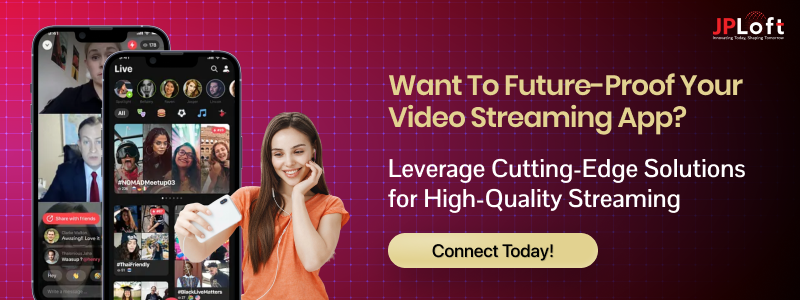
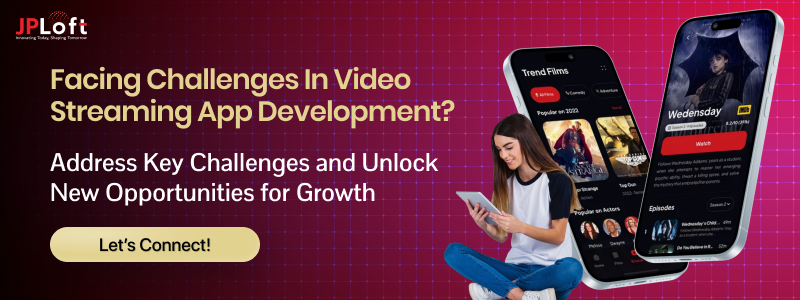

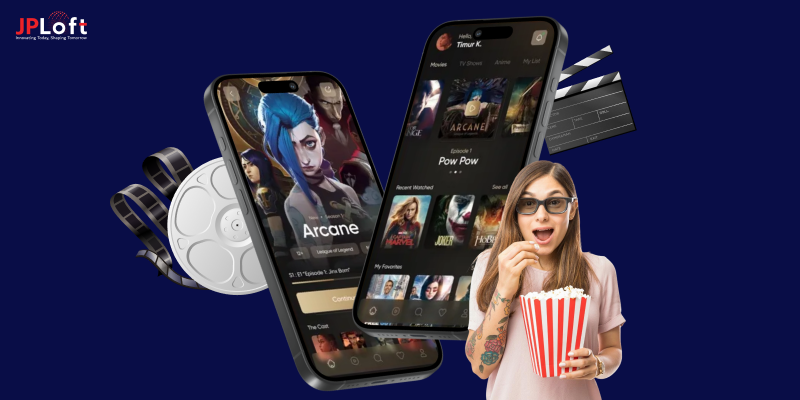
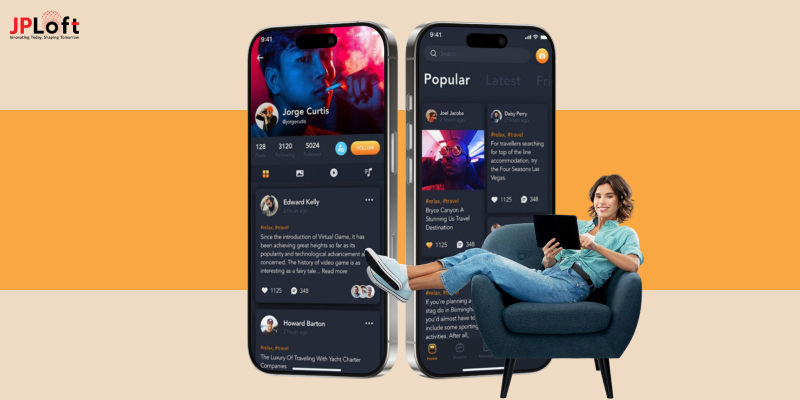
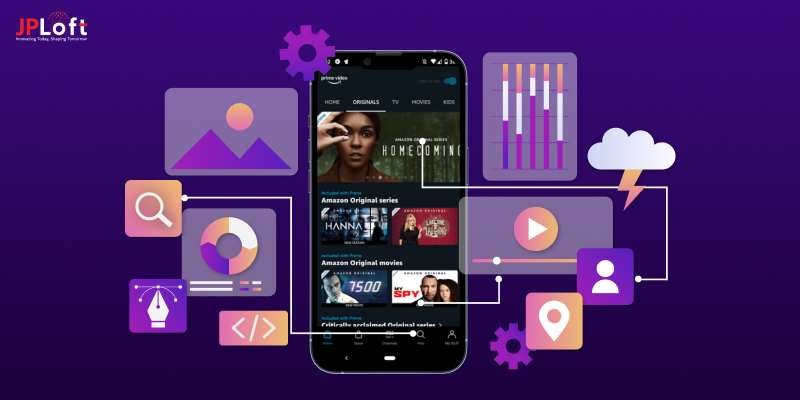



Share this blog